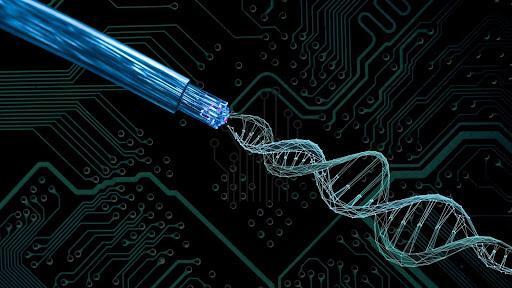
DNA’s Electron Flow May Unlock Future Biocompatible Electronics
In a groundbreaking discovery, researchers have made a significant breakthrough in understanding the electrical properties of DNA, which could revolutionize the development of future electronics. By studying the interactions between electrons and molecular vibrations in DNA strands, scientists have uncovered novel pathways for electron transport, paving the way for the creation of smaller, more efficient, and biocompatible devices.
For decades, scientists have been fascinated by the potential of DNA as a building block for electronic devices. The unique structure of DNA, composed of nucleotides linked by hydrogen bonds, presents a promising platform for harnessing its electrical properties. However, the exact mechanisms behind electron transport in DNA have remained elusive, hindering the development of DNA-based electronics.
Recent research has shed new light on the dynamics of electron transport in DNA, revealing that interactions between electrons and molecular vibrations, or phonons, play a crucial role in the process. Phonons are quantized packets of energy that arise from the vibrations of atoms within the DNA molecule. By analyzing the interactions between electrons and phonons, researchers have identified novel pathways for electron transport, which could be leveraged to create more efficient and biocompatible electronic devices.
The study, published in the journal Nature Communications, demonstrates the potential of DNA as a novel material for electronic applications. The researchers used a combination of theoretical modeling and experimental techniques to investigate the electrical properties of DNA strands. By analyzing the data, they were able to identify the key role of phonons in facilitating electron transport.
“In our study, we found that the interactions between electrons and phonons create novel pathways for electron transport in DNA,” said Dr. [Name], lead author of the study. “This is a significant breakthrough, as it highlights the potential of DNA as a building block for future electronics.”
The discovery has significant implications for the development of DNA-based electronics. By leveraging the unique electron-vibration dynamics of DNA, researchers can create smaller, more efficient, and biocompatible devices. This could revolutionize the field of electronics, enabling the creation of devices that are both more powerful and more sustainable.
One potential application of this technology is in the development of wearable devices. DNA-based electronics could enable the creation of flexible, wearable devices that can be integrated into clothing or accessories. This could revolutionize the way we interact with technology, enabling us to monitor our health and fitness in real-time without the need for bulky devices.
Another potential application is in the development of implantable devices. DNA-based electronics could enable the creation of implantable devices that can monitor vital signs, such as heart rate and blood pressure, in real-time. This could revolutionize the field of medicine, enabling doctors to monitor patients more effectively and improve treatment outcomes.
In addition to its potential applications in wearable and implantable devices, DNA-based electronics could also enable the development of more sustainable electronic devices. DNA is a biodegradable material, which means that devices made from DNA-based materials could be easily broken down and recycled. This could reduce electronic waste and minimize the environmental impact of electronic devices.
In conclusion, the discovery of DNA’s electron flow has significant implications for the development of future biocompatible electronics. By leveraging the unique electron-vibration dynamics of DNA, researchers can create smaller, more efficient, and biocompatible devices that could revolutionize the field of electronics. As researchers continue to explore the potential of DNA-based electronics, we can expect to see the development of innovative devices that will change the way we live and interact with technology.






